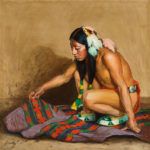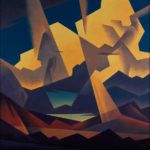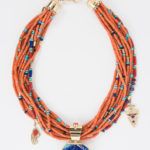The director of the new James Museum of Western & Wildlife Art talks about its opening this spring in Florida
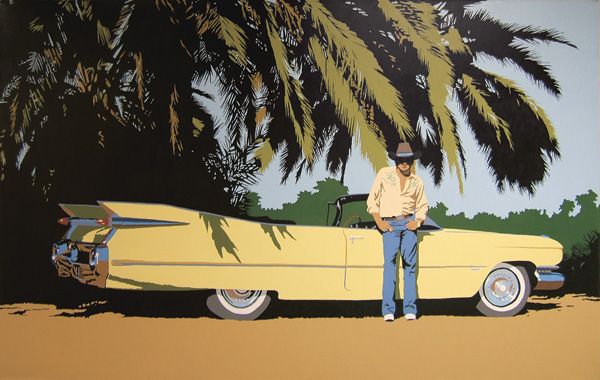
Billy Schenck, King George, 1980, oil.
This story was featured in the March 2018 issue of Southwest Art magazine. Get the Southwest Art March 2018 print issue or digital download now–then subscribe to Southwest Art and never miss another story.
The cultural richness of downtown St. Petersburg, FL, is about to take on another dimension—that of the West—with the new James Museum of Western & Wildlife Art. Opening April 7, the museum will showcase some 400 exceptional artworks from the more than 3,000 pieces collected over the years by St. Petersburg residents Tom and Mary James. The couple is sharing their love of the West and western art in a beautiful and architecturally exciting new space in the heart of the city. Director Bernice Chu spoke with us about the project.
What motivated building a museum for the James collection now? Tom and Mary have been collecting for over 40 years, and the collection has been housed at the Raymond James corporate offices in St. Petersburg. There have been guided tours specific to the collection, which have been very popular. St. Petersburg is an up-and-coming cultural destination and other museums are opening to join already-popular museums such as The Dali Museum. Tom and Mary wanted to give back to the St. Petersburg community because it’s their home.
Is the collection moving out of the corporate offices, or will it be in both places now? Much of
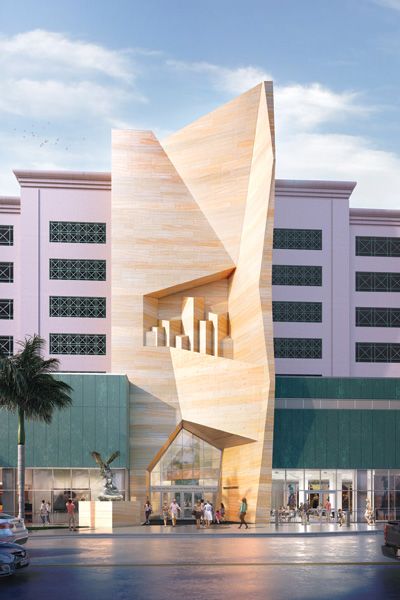
An architect’s rendering of the exterior of the new James Museum of Western & Wildlife Art.
it will remain in the corporate offices because the employees don’t want to give up the collection; it means a lot to them. So about 400 pieces—the highlights—will be in the museum’s permanent collection galleries, and then there are enough pieces that we can also do special exhibitions.
Most of the collection is by living artists? About 95 percent of the work is by living artists. Tom has wanted to support living artists so they can continue to produce art. He has supported artists through generations in some families.
Talk a little about some of the highlights of the museum’s collection. We have galleries focusing on different types of western art. The Early West Gallery showcases historic artists including Remington, Russell, and some of the Taos Society artists. We have TIDBITS by William Robinson Leigh. Then there’s the Native American Gallery with works by such greats as Allan Houser, Dan Namingha, Tony Abeyta, Oreland Joe, and Tammy Garcia. WINTER SUNRISE CIRCLE OF THE BIG SKY PEOPLE, by Earl Biss, is special because it was Tom and Mary’s first purchase of art by an American Indian artist. It’s what started their passion for collecting western art. In the Frontier Gallery, standouts include DINNER MUSIC by Charlie Dye and A WESTERN HERITAGE by Jason Rich. Bob Kuhn’s BRINGING DOWN THE OLD BULL joins works by Robert Bateman, Carl Brenders, and other masters of the genre in the Wildlife Gallery. And then there’s the New West, for contemporary artists including Paul Pletka and Logan Maxwell Hagege. We’re also pleased to have Ed Mell’s HIGH DESERT CLOUDS and OH, YOU WANTED TO SEE MY GUNS? by Billy Schenck.
Will the museum be actively collecting?
We have enough from the James’ permanent collection, so we’ll hold off on collecting for now, although Tom and Mary will continue to collect. We want to present special exhibitions to bring the community in, including thematic shows, for example, about the environment and other things that are relevant. We want to inspire people about the West, because westward expansion is really the history of the United States. I think a lot of that history is lost and people just think it’s cowboys and Indians, but it’s so much more than that.
What special exhibitions are planned at this point? In July we’re hosting the Society of Animal Artists’ annual exhibition.
What else makes this new museum exciting for the public? It will be a beautiful public space. The galleries will be on the upper floors, but when you walk in, the architecture (by the St. Pete Design Group) is evocative of a canyon, with sandstone walls throughout the building and a waterfall at the end of the lobby, with sculptures installed throughout. The exterior has a sculptural element to it. So the architecture really reflects the collection. We’ll have a café and a retail store, and a 6,000-square-foot special-events space, one of the largest in the area. We’ll also have an auditorium for films, talks, and live performances. So there’s a lot to offer in the footprint of the museum, more than the permanent collection and its artistic and historical significance. We really want to activate it as a gathering place for the community and make it a unique visitor experience. –—Interviewed by Gussie Fauntleroy
- Eanger Irving Couse (1866-1936), Indian Examining a Blanket, 1922, oil.
- Ed Mell, High Desert Clouds, 2013, oil.
- Jesse Monongya, Monument Valley Necklace, 2015, 18K gold, coral, lapis, gaspeite, turquoise.
This story was featured in the March 2018 issue of Southwest Art magazine. Get the Southwest Art March 2018 print issue or digital download now–then subscribe to Southwest Art and never miss another story.
MORE RESOURCES FOR ART COLLECTORS & ENTHUSIASTS
• Subscribe to Southwest Art magazine
• Learn how to paint & how to draw with downloads, books, videos & more from North Light Shop
• Sign up for your Southwest Art email newsletter & download a FREE ebook






